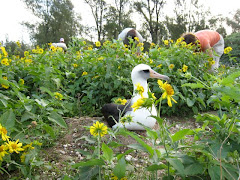
Red-tailed tropic birds, why are you declining? You have the cutest babies with halo fluff. And Laysan ducks happy in puddles or sitting on whale bones need assistance to continue to increase their population. And I haven’t yet mentioned the great frigate birds, the black footed albatross, Bulwers petrels and so many others. Monk seals especially the young are playful, entanglement a problem for them.
Then there is the sea, its indescribable beauty coloring the clouds green and being a foil for white bird portraits. Under that turquoise and azure color is a predator dominated ecosystem, meaning plenty of large uluas and sharks! Seeing nudibranch for the first time and being where the animals studied me as much as I looked at them was novel. And yes on the beaches and shores was a large amount of plastic which compels me to do even more about it. And the albatross chicks that have died from ingesting too much plastic is heartbreaking and a grim warning for humans who are filling the ocean food chains with plastic. No, you didn’t mean to and I didn’t mean to, but plastic is everywhere, getting into the ocean food chains, breaking into small pieces and becoming more numerous than plankton in some parts of the ocean. So fish and marine life are more likely to eat plastic than food. Now that you know, what will you do?
This is now our kuleana, our privilege and responsibility to do something and for those reading this I give it also to you.
photo credit: Sunny Seal-LaPlante

















No comments:
Post a Comment